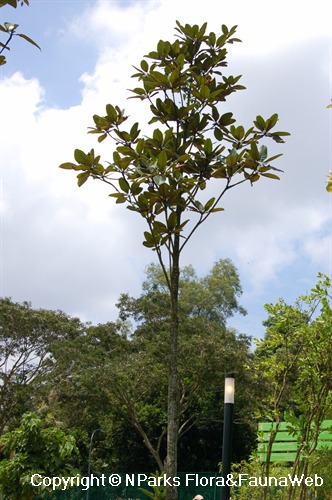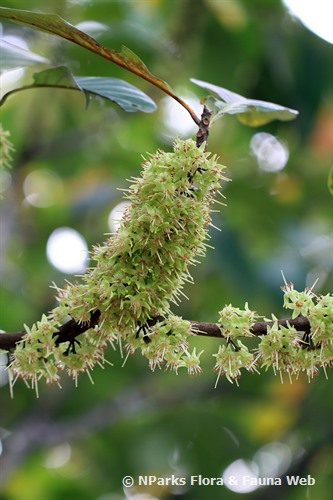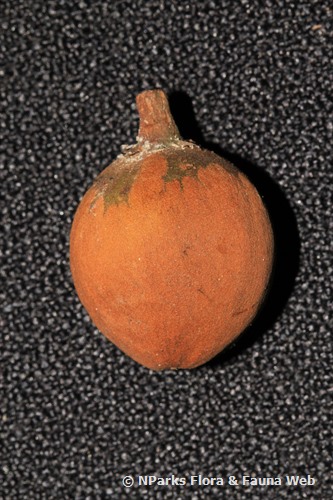
Name
Classifications and Characteristics
| Plant Division | Angiosperms (Flowering Seed Plants) |
|---|---|
| Plant Growth Form | Tree (Big (>30m)) |
| Maximum Height | 50 m |
Biogeography
| Native Distribution | Southeast Asia, Australasia, Taiwan, Malaysia, Solomon Islands, Indo-Malesia, Polynesia |
|---|
Description and Ethnobotany
| Others - Plant Morphology | Growth Form: Tall evergreen tree with a conical-shaped crown. Habitat: Occurs in primary lowland tropical forests at altitudes of 0 - 300 m. Populations of this species are scattered throughout forests at low density. Trunk: The trunk has fissured bark that is mostly grey with white patches. It is very tall with branching beginning at > 3m above ground level. This species develops plank buttress roots at maturity. The trunk can grow to be 1.3 m wide. Foliage: Leaves simple and elliptic (leaf blade about 30 cm long and 10 cm wide) with entire leaf margins. Leaves tend to point upwards and occur in spirally arranged clusters along the length of main branches. Flowers: White flowers occur along the stem in clusters. Fruits: Fruit is an oblong berry, each holding 1 - 4 seeds. The lesser dog-faced fruit bat (Cynopterus brachyotis Muller) helps to disperse seeds by consuming the fruit and passing the seeds in its feces. In Malaysia, trees typically produce fruits in July and August. Landscaping: Not commonly used in landscaping. Its medium-sized dark-coloured leaves are a good contrast with other small and light-coloured leaved trees in a landscape. This tree is very sensitive to a high water-table or poor drainage sites, so they should never be planted in areas with wet or moist soils. Cultivation: Plant in soil with good drainage. Propagation: Propagate by seed or stem cuttings. Etymology: The genus “Palaquium” is derived from the Filipino common plant name of palak-palak. |
|---|---|
| Ethnobotanical Uses | Others: The tree sap can be used to make an inelastic form of latex known as gutta-percha. Gutta-percha can be used for a variety of purposes, such as insulation for marine cables, golf balls, or dental fillings. It was used in the Western world from the mid 1800s to the 20th century, but now synthetic materials are more commonly used. The tree is also harvested for timber used in furniture, carvings, boat and home construction. |
Landscaping Features
| Landscape Uses | General |
|---|
Plant Care and Propagation
| Light Preference | Full Sun |
|---|---|
| Water Preference | Moderate Water |
| Plant Growth Rate | Moderate |
Image Repository
Others
| Master ID | 30197 |
|---|---|
| Species ID | 4506 |
| Flora Disclaimer | The information in this website has been compiled from reliable sources, such as reference works on medicinal plants. It is not a substitute for medical advice or treatment and NParks does not purport to provide any medical advice. Readers should always consult his/her physician before using or consuming a plant for medicinal purposes. |



_lowres.jpg)